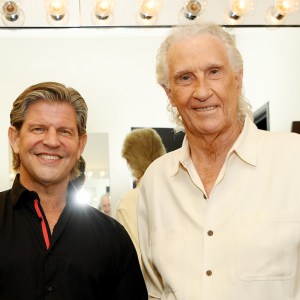Joy Division’s 1979 debut, Unknown Pleasures, is a darkly defined landmark, commencing post-punk and becoming something bigger than its parts by influencing contemporaries like The Cure and more in its path nearly 45 years since its release.
Videos by American Songwriter
Unfurled by the persistent bass thumps of “Disorder” and through more enigmatic pulses on “She’s Control” and “Shadowplay,” Unknown Pleasures was a proto-post-punk masterpiece.
It was otherworldly—right up to its blackened imagery of neutron pulses on its cover.
Revolving Star
An image of a stacked plot of radio emissions emitted by a pulsar, or a rotating neutron star, became the cover art ultimately used for Unknown Pleasures. First discovered by student Cambridge University student Jocelyn Bell Burnell and her supervisor Antony Hewish in 1967, the star was originally named CP 1919 and later published in The Cambridge Encyclopaedia of Astronomy in 1977.
Like a beam, the star emitted electromagnetic radiation, which could be picked up by radio telescopes. Each line depicted in the image is a different pulse. Each is not the same as it travels through space.
White and Blue
The image was first published in a 1971 feature in Scientific American as a white image with blue background.
In his piece, “The Oldest Pulsars in the Universe,” journalist Jacob Shaham wrote:
[Radio pulsars] are thought to be rotating neutron stars: huge, spinning ‘nuclei’ that contain some 1057 protons and neutrons. … The large clump of nuclear matter, which has a mass about equal to that of the sun, is compressed into a sphere with a radius on the order of 10 kilometers. Consequently, the density of the star is enormous, slightly greater than the density of ordinary nuclear matter, which is itself some 10 trillion times denser than a lead brick. Currents of protons and electrons moving within the star generate a magnetic field. As the star rotates, a radio beacon, ignited by the combined effect of the magnetic field and the rotation, emanates from it and sweeps periodically through the surrounding space, rather like a lighthouse beam. Once per revolution the beacon cuts past the earth, giving rise to the beeping detected by radio telescopes.

Peter Saville
The band first brought the image of the rotating star to graphic designer Peter Saville to rework as the art they wanted for the cover.
“This was the first and only time that the band gave me something that they’d like for a cover,” said Saville in 2011. “I went to see Rob Gretton, who managed them, and he gave me a folder of material, which contained the wave image from the ‘Cambridge Encyclopedia of Astronomy.’ They gave me the title too but I didn’t hear the album. The wave pattern was so appropriate. It was from CP 1919, the first pulsar, so it’s likely that the graph emanated from Jodrell Bank, which is local to Manchester and Joy Division.”
Saville added, “And it’s both technical and sensual. It’s tight, like Stephen Morris’ drumming, but it’s also fluid: lots of people think it’s a heartbeat. Having the title on the front just didn’t seem necessary. I asked Rob about it and, between us, we felt it wasn’t a cool thing to do. It was the post-punk moment and we were against overblown stardom. The band didn’t want to be pop stars.”
Following the death of Joy Division singer Ian Curtis in 1980, Saville would go on to work on several New Order singles and album covers, including Power, Corruption & Lies (1983), Low-Life (1985), and Technique (1989), and more with remaining Joy Division (now New Order) band members vocalist and guitarist Bernard Sumner, bassist Peter Hook, and drummer Stephen Morris.
Pop Culture Pleasures
Produced by Martin Hannet, who later went on to work with New Order, Unknown Pleasures peaked at No. 5 on the UK Albums chart, and its cover art has become one of the most identifiable works of graphic design art.
In all its waves, the stacked image is one of the most recreated album covers across multiple mediums, from art, to T-Shirts, and more.
Photo by Martin O’Neill/Redferns
